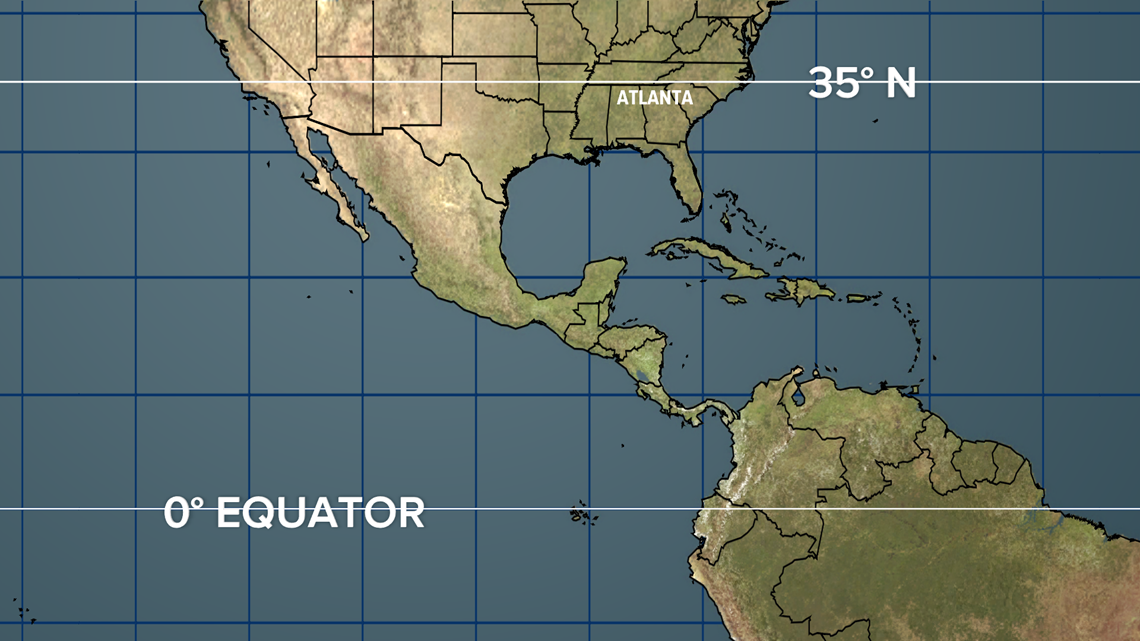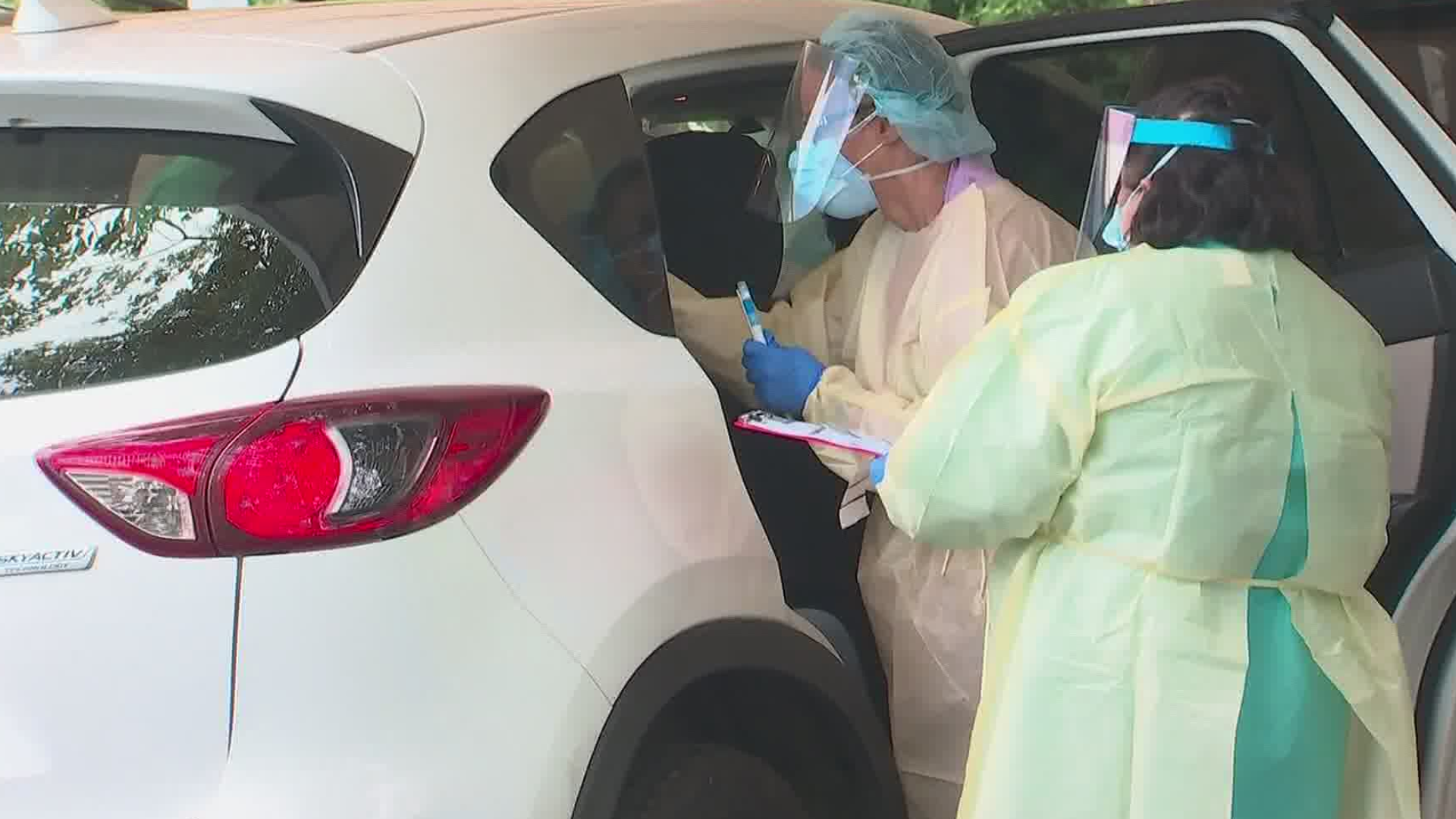ATLANTA — The research community is working as fast as possible to learn more about COVID-19, from medical treatments to environmental factors that impact the virus transmission.
Studies have shed light on, some quite literally, the impacts our climate in the southeastern United States has on the spread of the virus.
Although there is still considerable uncertainty with many aspects of the virus, many characteristics of summer weather in Atlanta may be detrimental to the lifespan of COVID-19, according to multiple studies.
Let’s think about summer weather in the South: It’s sunny, hot, and humid
Sunshine
The five months of the year with the most sunshine in Atlanta on average are April through August, which is a big reason why these are some of the warmest months of the year.
Multiple studies have shown that COVID-19 and similar viruses do not survive in sunlight. UV light is used as a surface disinfectant, particularly UV-C light. That type of UV light does not impact us on the earth’s surface, but UV-B from sunlight does.
According to a study by the Department of Homeland Security, tests prove that sunlight can kill the virus on things like playgrounds, benches, anything left outside in the sun.
During those five months, the sun angle is most severe or directly overhead.
That means the sun is most powerful and delivering the COVID-19 killing rays. You are also most likely to get a sunburn quickly during this period too.
This may explain the findings from another study that found Wuhan was experiencing the cloudiest month since 2007 during the initial virus spread. What’s more, the cloudiest time of the year in hard-hit cities like New York City, Seattle, Chicago is during the initial publicized virus spread period.
Another encouraging study shows that civilization near and below 35 degrees N latitude have fared better with COVID-19 patient recovery and transmission rates.
Atlanta, Georgia, and much of the southeast lie under 35° N in the favored area.


This 35 degrees N latitude point is important, the closer you get to the Equator, the more direct sunlight is received.
This could mean this area is getting more COVID-19 killing rays and/or that the population is absorbing more sunlight and creating vitamin D, which has been linked to increased recovery by patients in Indonesia and other parts of the world.
Temperature
More sunlight means warmer temperatures, simple as that. But the temperature needed to kill or harm the virus is not quite as simple.
Overall, the warmer the temperature the more detrimental it is to the virus. This is why research shows the virus can last for a long time in a temperature and humidity controlled environment like your refrigerator.
Research from China showed that temperatures over 75F were detrimental to the virus, while the DHS study identified it at 95F. In either case, researchers said the warmer the temperature the shorter the life of the virus.
While high temperatures in the middle 90s are usually possible from June-September in Atlanta, outdoor surfaces may heat up beyond the 95 threshold any time of the year under direct sunlight.
Humidity
Research from the Department of Homeland Security indicates that higher humidity plays a role in killing the virus. This is particularly applicable outside during summer where humidity levels can be much higher in the southeast.
There is not as much known about this variable compared to sunlight. It can be seen as a supplemental impact on the virus behind sunlight and temperature. But like sunlight and temperature and related, so maybe temperature and humidity.
During a White House press briefing, Bill Bryan, leader of the Science and Technology Directorate at the Department of Homeland Security, said, “as the temperature increases, as the humidity increases, with no sun involved, you can see how drastically the half-life goes down on that virus.'
In a phone call, Paul Dabisch, Ph.D., Senior Principal Investigator and Aerobiology Group Leader with DHS told me that sunlight is the biggest environmental influence on the life of the virus followed by temperature and humidity.
What this may mean for Atlanta
It is encouraging to see what seasonal weather factors can kill the virus, without the use of liquid disinfectants. If these studies do verify with the case numbers this summer, that is great for our understanding of the virus.
This would mean outdoor playground equipment, patio furniture, beach chairs, anything with long exposure time to the sun would be disinfected from the deadly virus, provided the surface had been exposed to sunlight long enough.
It will also confirm that once we go back into winter when environmental factors become more conducive, we may have to endure another increase in COVID-19 cases.
11Alive is focusing our news coverage on the facts and not the fear around the virus. We want to keep you informed about the latest developments while ensuring that we deliver confirmed, factual information.
We will track the most important coronavirus elements relating to Georgia on this page. Refresh often for new information.
MORE CORONAVIRUS HEADLINES |

